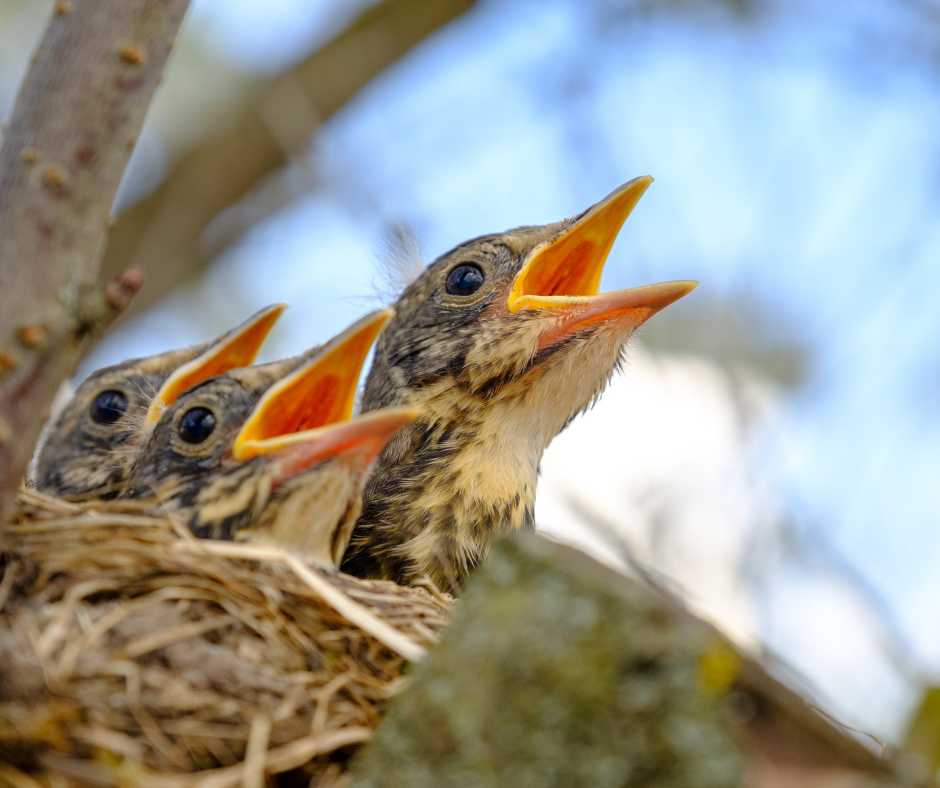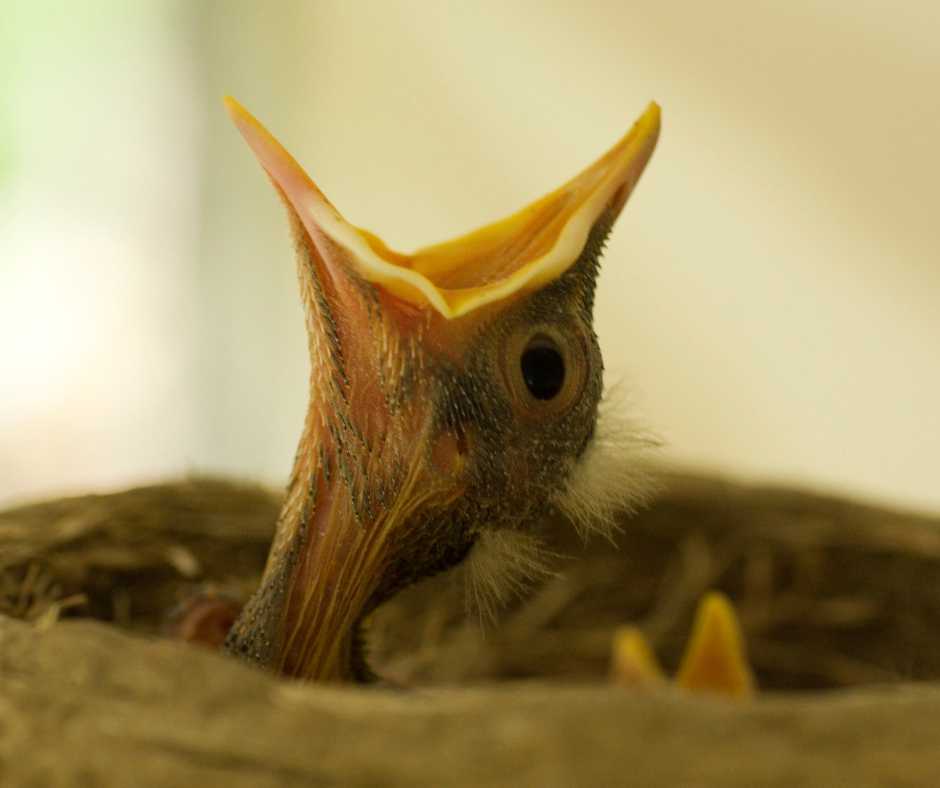Have they ever wondered why birds open their beaks? It’s not just a quirky habit.
Birds open their beaks for various reasons, including thermoregulation, as they cannot sweat. Open beaks help cool them by allowing air to flow over their tongues, acting like a natural air conditioner. Additionally, beaks serve in communication, from mating calls to territory warnings and feeding, where parents signal to chicks.
This blog dives into the fascinating science behind open beaks, from staying cool on hot days to the intricacies of avian communication and feeding. Join us to uncover the mysteries of why birds do what they do and what it tells us about their complex lives.
The Science Behind Open Beaks
Thermoregulation: The Cooling Mechanism of Birds
Ever seen a bird with its beak wide open on a hot day and wondered, “What’s up with that?” Well, it’s all about staying calm, literally. Birds can’t sweat like us, so they have a nifty trick to beat the heat. When it feels like they’re wearing a winter coat in the middle of July, opening their beak helps them chill out.
This is because panting lets air flow over their tongues, evaporating water and carrying the heat away from their bodies. It’s like having a mini fan inside their mouths! So next time you see a bird gaping on a scorcher of a day, remember, they’re trying to stay cool, like you’d fan yourself with a magazine.

Vocalizing Intentions: Open Beaks in Bird Communication
But it’s not about keeping cool. Birds are chatty creatures, and their open beaks are like their microphones. Whether it’s a sweet serenade to woo a mate or a stern warning to trespassers, an open beak plays a big part in the bird’s chat app.
Some birds even have unique tunes for different messages, from “Hey, look at me!” to “Stay away from my nest!” It’s all about getting the message across loud and clear. Imagine if we could talk, sing, and even argue with wide-open mouths – birds do all that without missing a beat!
The Cornell Lab of Ornithology delves into the intricacies of how birds communicate, offering insights into their diverse vocalizations. Discover the science behind bird communication on their official website. Explore bird communication at the Cornell Lab of Ornithology.
Read more: How to Teach a Parrot to Talk
The Feeding Signal: From Parent to Chick
Now, let’s talk about mealtime in the bird world. When it’s time to feed the little ones, an open beak is like ringing the dinner bell. Baby birds stretch their necks and open their mouths wide to signal they’re hungry and ready for some delicious grub.
Parent birds see this as a clear sign to start the feeding frenzy. It’s their way of ensuring every chick gets its fair share of the worm pie. So, when you spot a nest full of open beaks, you’re witnessing a family dinner in full swing, feathered style!

Behavioral and Physiological Insights
Distress Signals: Reading Signs of Discomfort
Ever noticed a bird sitting still with its beak wide open and wondered if it’s just taking a breather or something’s up? Turns out, an open beak can be a bird’s way of saying, “I’m not feeling too hot.” It’s like their version of holding up a little sign that says, “Help, I’m in distress!”
That open beak signals to the world that they could use a little TLC, whether they’re too warm, sick, or scared out of their feathers. If a bird keeps its beak open often and seems a bit off, it might be trying to cool down, but it could also mean it’s not well.
It’s their way of showing they need extra care, like when you’re not feeling well and want someone to notice and give you a cozy blanket.
For a deeper understanding of these signs and how to help, visit PetMD’s article on How To Tell If a Bird Is Stressed, Depressed, or Anxious.
Adaptive Behaviors: Open Beaks During High Temperatures
Birds also feel the heat on those scorching summer days when you’re melting faster than ice cream on the sidewalk. Since they can’t sweat it out as we do, they have a nifty trick to beat the heat: open-beak breathing. It’s a bit like panting.
This is their go-to move for cooling down when the sun’s blazing. By opening their beaks and breathing fast, they let air flow over their moist throats and tongues, which helps cool them down by evaporation. It’s their natural way of saying, “Phew, is it hot out here, or is it just me?”
Beyond Breathing: The Intricacies of Avian Respiratory Systems
Birds are pretty amazing when you think about it. They fly high, sing sweetly, and have this incredible respiratory system that supports their high-flying lifestyle. An open beak isn’t just for cooling down or making noise; it’s also part of how they breathe so efficiently.
With their fast metabolism keeping them on the go, birds need a lot of oxygen. Opening their beak helps them breathe more air, especially when flying or after intense activity. It’s like they have a built-in turbo boost for their lungs, ensuring they get all the oxygen needed to keep soaring.

The Diversity of Beak Use Among Bird Species
Just like people use tools in different ways to get jobs done, birds use their beaks for all sorts of tasks, not just for chowing down or chatting up a storm. Each bird species has its unique way of using its beak, tailored to its lifestyle.
For example, hummingbirds have long, slender beaks perfect for sipping nectar from flowers, while hawks have sharp, hooked beaks designed for tearing into their prey. And when it comes to cooling down or breathing, different birds have different ways of using their beaks, too.
This incredible variety is a testament to how birds adapted to their unique ecological niches, showing how versatile and clever these feathered friends can be.
Environmental and Social Influences on Beak Behaviors
The Impact of Climate on Avian Mouth Movements
Ever think about how a super hot day makes you want to gulp down cold drinks and seek shade? Birds feel the summer heat, too. But instead of sweating or sipping iced tea, they open their beaks. It’s how they handle the heat.
Temperature and humidity play a significant role in this. On hot and sticky days, you’ll see more birds with wide-open beaks trying to cool off by letting air flow over their moist throats. This is like their natural air-con system kicking in.
And when it’s super humid, this beak-gaping trick becomes even more critical because the moisture in the air makes it harder for them to cool down. Like us feeling extra sticky on humid days, birds find it more challenging to stay calm, so an open beak is a lifeline for them.
Social Dynamics and Open Beaks
But it is not just the weather that gets birds to open their beaks. Have you ever considered how birds use their beaks when hanging out with each other or even arguing? Yup, birds are social creatures, and their open beaks play a big part in their social lives.
For instance, a bird might open its beak to show it’s the boss of its territory or to warn others to stay away. It’s like saying, “This is my spot!” without words. During mating season, open beaks are all about impressing potential mates. Think of it as their version of showing off their best dance moves at a party.
And when it comes to family, birds use their open beaks to feed their chicks, signaling it’s dinner time. It’s incredible how something as simple as an open beak can say so much about what’s going on in a bird’s life, from “Back off!” to “Hey, look at me!” and “Time to eat, kids!”
This shows how connected they are to their environment and each other, making their world a fascinating spectacle of interaction and communication.

People Also Asked
Why do birds open their beaks when it’s sweltering outside?
Birds open their beaks to cool down because they can’t sweat like us. Opening their beak lets air flow over their tongues, which helps them feel more relaxed.
Can birds communicate by opening their beaks?
Yep! Birds use their open beaks to communicate all sorts of things, from calling out to their friends to warning others to stay away from their territory.
Do birds open their beaks when they are sick?
Sometimes, yes. If a bird feels unwell or is too hot, it might open its beak to breathe easier or cool down.
How do birds use their open beaks to feed their young?
Parent birds often feed their chicks by regurgitating food into their open mouths. It’s a sign of trust and care in the bird world.
What should I do if I always see a bird with its beak open?
It might be hot, or it could be unwell. Make sure it has shade and water nearby. If you think it’s sick, contacting a wildlife rehabilitator for advice is a good idea.
Wrap Up
So, what have we learned from peeking into the world of birds and their open beaks? A whole lot! It’s clear that every open beak, whether to cool down, chat with friends, or share a meal, tells a part of the grand story of Avian’s life.
This peek into their lives isn’t just fascinating—it’s a call to us all. Let’s cherish these feathered wonders and protect their homes. By understanding more about birds, we can help keep their songs alive for generations. So, why not grab binoculars, step outside, and start your bird adventure today? Who knows what stories you’ll uncover!

